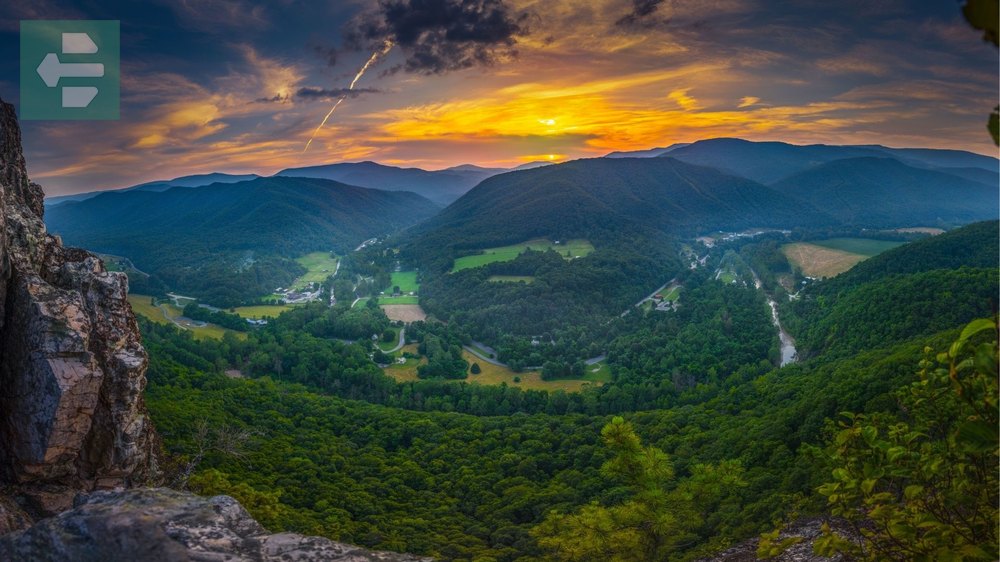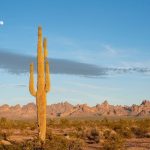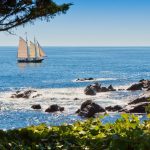West Virginia offers rugged mountains, historic towns, and outdoor adventures that rival any destination. The best places to visit in West Virginia include Harpers Ferry's Civil War history, New River Gorge's world-class climbing, and Monongahela National Forest's pristine wilderness.
Keep reading as we explore the hidden gems and must-see destinations that make West Virginia an unforgettable adventure.
List of Contents
- 1. New River Gorge: America's Newest National Park
- 2. Harpers Ferry: Where History Lives
- 3. Monongahela National Forest: 919,000 Acres of Solitude
- 4. Charleston: Mountain Culture Meets Modern Life
- 5. Lewisburg: Small Town, Big Character
- 6. Wheeling: Victorian Elegance on the Ohio River
- 7. Morgantown: College Town Energy
- 8. Beckley: Gateway to Adventure
- Your West Virginia Adventure Awaits
1. New River Gorge: America's Newest National Park
The New River carved this 1,000-foot-deep canyon over millions of years, creating one of the oldest rivers on the continent despite its name. Bridge Day in October transforms the famous steel arch bridge into the world's largest extreme sports festival.

Rock climbers know this place as the East Coast's premier destination. Over 1,400 established routes challenge everyone from beginners to experts. The sandstone holds your grip even when wet.
I watched a golden eagle soar beneath the bridge one September morning while belaying my climbing partner. That moment reminded me why this place earned national park status in 2020.
Quick Facts:
- Peak Season: April-October
- How to Get There: US Route 19, multiple access points
- Entrance Fee: Free
- Suggested Stay: 2-3 days
- Must-See Spots: Bridge Walk, Endless Wall Trail, Grandview
2. Harpers Ferry: Where History Lives
Harpers Ferry sits at the confluence of two rivers and witnessed pivotal moments in American history. John Brown's 1859 raid happened here, sparking events that led to the Civil War.
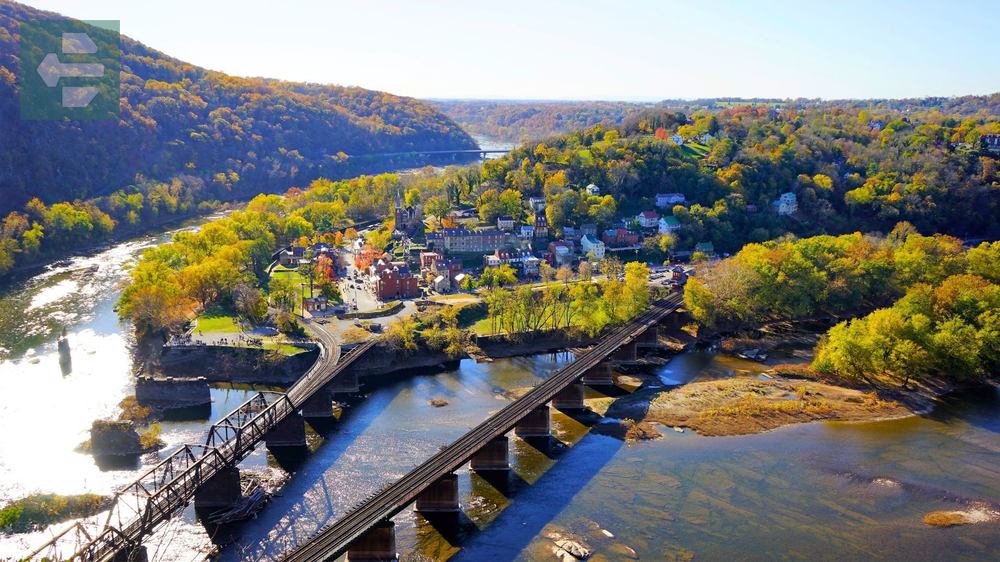
The town feels frozen in time with its cobblestone streets and 19th-century buildings. Park rangers lead walking tours that bring the past to life without feeling like a textbook.
Hike the Maryland Heights Trail for sweeping views of the Potomac and Shenandoah rivers meeting. The 4-mile round trip rewards you with the same vantage point Civil War generals used to plan their strategies.
Quick Facts:
- Peak Season: April-October
- How to Get There: US Route 340, Amtrak service available
- Entrance Fee: From $15 per vehicle
- Suggested Stay: 1-2 days
- Must-See Spots: John Brown's Fort, Appalachian Trail, Potomac River
3. Monongahela National Forest: 919,000 Acres of Solitude
This forest spans nearly one million acres across eastern West Virginia's highest peaks. Spruce Knob rises 4,863 feet—the state's highest point—offering views that stretch across three states on clear days.

The forest contains over 800 miles of trails, including 75 miles of the Appalachian Trail. Dolly Sods Wilderness feels like walking through the Canadian tundra with its unique bog ecosystem and windswept plains.
Local tip: Visit the cranberry bogs in autumn when they turn deep red. The berries grow wild here, and you can taste the difference from store-bought varieties.
Quick Facts:
- Peak Season: May-October
- How to Get There: Multiple access points via Routes 28, 33, and 55
- Entrance Fee: Free (some campgrounds charge fees)
- Suggested Stay: 3-5 days
- Must-See Spots: Spruce Knob, Dolly Sods, Seneca Rocks
4. Charleston: Mountain Culture Meets Modern Life
Charleston balances Appalachian heritage with contemporary attractions. The State Capitol's gold dome dominates the skyline, while the Kanawha River provides a scenic backdrop for the city's cultural district.

The Capitol Market buzzes with local vendors selling everything from handmade crafts to farm-fresh produce. Saturday mornings bring the best selection and live bluegrass music that echoes through the renovated train station.
Walk the FestivALL Summer festival in June when the city transforms into an outdoor performance venue. Local musicians play on street corners while food trucks serve regional specialties.
Quick Facts:
- Peak Season: April-October
- How to Get There: I-77 and I-64 intersection, regional airport
- Entrance Fee: Free (individual attractions vary)
- Suggested Stay: 2-3 days
- Must-See Spots: State Capitol, Capitol Market, Clay Center
5. Lewisburg: Small Town, Big Character
Lewisburg earned recognition as one of America's best small towns, and walking its tree-lined streets explains why. The historic district contains over 100 buildings on the National Register, each telling stories of 18th-century frontier life.
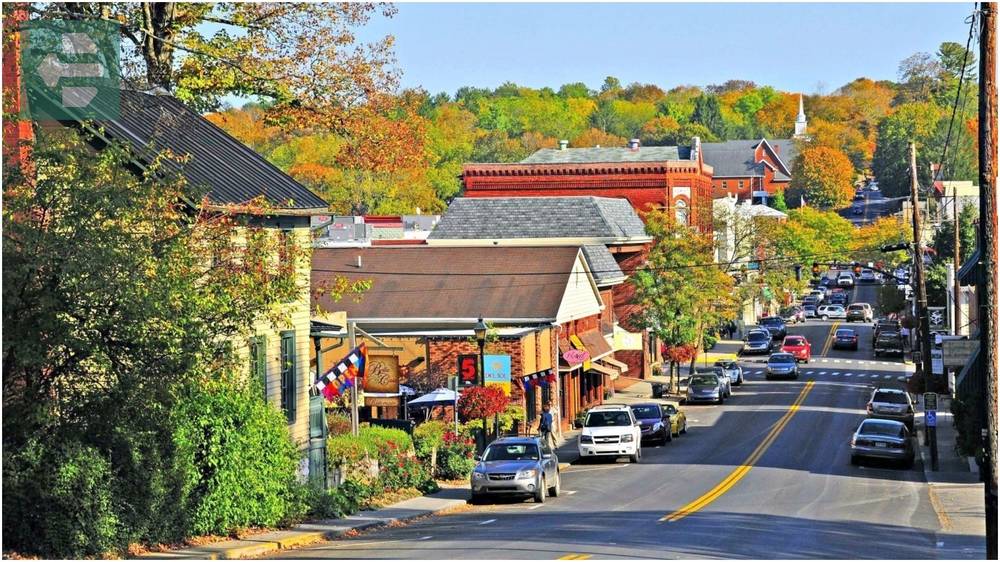
The Greenbrier Valley surrounds this town with rolling hills perfect for cycling. Rent a bike from a local shop and follow the Greenbrier River Trail, which follows an old railroad bed for 78 miles.
During my last visit, I discovered the town's Saturday farmers market where Amish families sell fresh bread and vegetables. The conversations happen in measured tones that match the pace of life here.
Quick Facts:
- Peak Season: May-October
- How to Get There: I-64 Exit 169
- Entrance Fee: Free
- Suggested Stay: 1-2 days
- Must-See Spots: Historic Downtown, Greenbrier River Trail, Lost World Caverns
6. Wheeling: Victorian Elegance on the Ohio River
Wheeling's Victorian architecture reflects its 19th-century prosperity as a river port and industrial center. The suspension bridge, completed in 1849, was once the world's longest span and still carries traffic today.
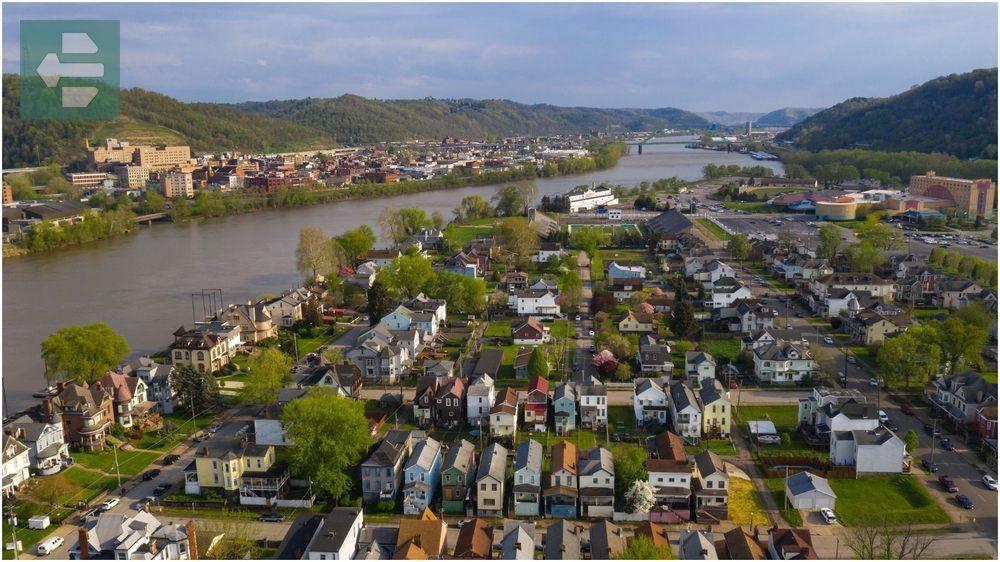
Oglebay Park spans 1,700 acres with gardens, golf courses, and a resort that hosts the annual Festival of Lights. December transforms the park into a winter wonderland with over one million lights.
The Capitol Theatre hosts touring Broadway shows in an intimate setting that makes every seat feel close to the action. Check their schedule—shows often sell out in this 2,500-seat venue.
Quick Facts:
- Peak Season: Year-round (December for lights)
- How to Get There: I-70 Exit 1A
- Entrance Fee: Free (attractions vary)
- Suggested Stay: 2-3 days
- Must-See Spots: Oglebay Park, Historic Downtown, Wheeling Suspension Bridge
7. Morgantown: College Town Energy
Morgantown pulses with university life while maintaining its mountain town character. The Monongahela River flows through downtown, connected by several bridges that offer scenic walking routes.
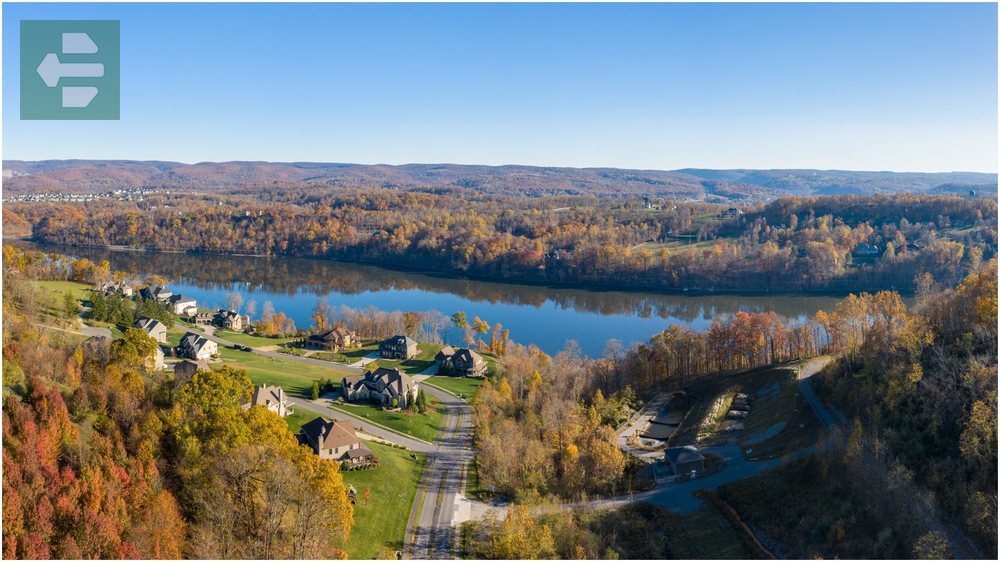
West Virginia University's campus blends into the city, creating an energy that peaks during football season. The Personal Rapid Transit system—a unique automated guideway—connects different parts of campus and downtown.
Cheat Lake provides summer recreation just minutes from downtown. Local students introduced me to cliff jumping spots that aren't in any guidebook, but the sunset views over the water are worth the drive alone.
Quick Facts:
- Peak Season: September-November (football season)
- How to Get There: I-68 Exit 1, regional airport
- Entrance Fee: Free
- Suggested Stay: 1-2 days
- Must-See Spots: WVU Campus, Downtown Waterfront, Cheat Lake
8. Beckley: Gateway to Adventure
Beckley serves as the southern gateway to New River Gorge and maintains its coal mining heritage through the Beckley Exhibition Coal Mine. Underground tours reveal the dangerous conditions miners faced daily.

The Tamarack arts center showcases regional artisans and serves as a cultural hub for southern West Virginia. The building's architecture mirrors the surrounding mountains while housing studios, galleries, and performance spaces.
Youth Lake offers quiet fishing and kayaking when you need a break from adventure sports. The 10-acre lake sits in a natural bowl surrounded by hardwood forests that explode with color each October.
Quick Facts:
- Peak Season: April-October
- How to Get There: I-77 Exit 44
- Entrance Fee: Free (mine tours from $18)
- Suggested Stay: 1-2 days
- Must-See Spots: Exhibition Coal Mine, Tamarack, Youth Lake
Your West Virginia Adventure Awaits
The best places to visit in West Virginia offer more than scenic beauty—they provide genuine experiences that stay with you long after you leave. Each destination reveals different aspects of mountain culture, from Civil War battlefields to underground mine shafts.
Pack your hiking boots and sense of adventure. West Virginia's mountains are calling, and they have stories to tell that you won't find anywhere else.
The real discovery happens between the planned stops, in conversations with locals who know hidden swimming holes and unmarked trails. Your West Virginia story starts the moment you cross the state line.
